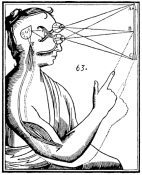
By Ben Parr, Mashable, CNN
STORY HIGHLIGHTS
* A Facebook intern created a visualization of Facebook connections around the globe
* Using a sample of 10 million friend pairs, he correlated them with their current cities
* The U.S. has the highest concentration of Facebook friendships while Africa has the lowest
Continue reading Facebook relationships visualized
Here is what Butler had to say @ newsday.com:
"After a few minutes of rendering, the new plot appeared, and I was a bit taken aback by what I saw. The blob had turned into a surprisingly detailed map of the world. Not only were continents visible, certain international borders were apparent as well. What really struck me, though, was knowing that the lines didn't represent coasts or rivers or political borders, but real human relationships. Each line might represent a friendship made while travelling, a family member abroad, or an old college friend pulled away by the various forces of life."
Facebook staffer Paul Butler has created this beautiful map of the millions (billions?) of friendships stored in the social network, using something that looks like edge bundles to create the beautiful map. Says, Randall Hand @ | VizWorld.com
On the same shelf:










